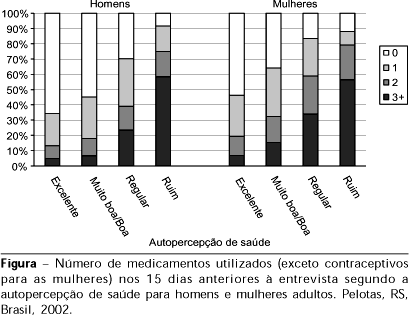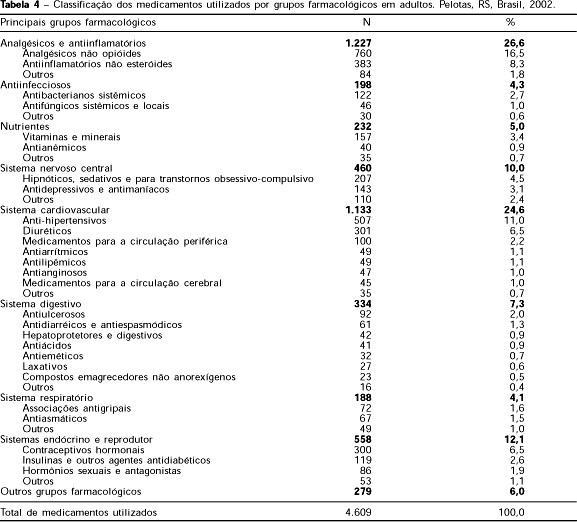OBJECTIVE: To study epidemiological patterns of drug utilization and its individual determinants and to classify drugs used into pharmacological groups. METHODS: In a population-based cross-sectional study, 3,182 subjects aged 20 years or more were selected from an urban area in Southern Brazil using a multi-stage sampling design. Data were collected through home interviews using a structured questionnaire. Drug use in the previous 15 days was recorded. Crude analysis was performed using the Chi-square test for heterogeneity and trend and t-test for means' comparison. The adjusted analysis was carried out using Poisson regression. RESULTS: The overall prevalence of drug utilization was 65.9%. The highest prevalences of drug use after adjusting for confounding were seen among elderly women in the upper economic class who had ill health self-perception. Analgesics, anti-inflammatory and anti-hypertensive drugs were the most frequently used drugs. CONCLUSIONS: The prevalence of drug use was found to be higher than in other national and international studies. Studies focusing on individual determinants of drug utilization can identify those groups with higher use. This knowledge might encourage specific strategies to decrease drug use and lead to restrictive policies concerning drug prescription and sale.
Drug utilization; Pharmacoepidemiology; Prescriptions, drug; Prevalence; Cross-sectional studies





